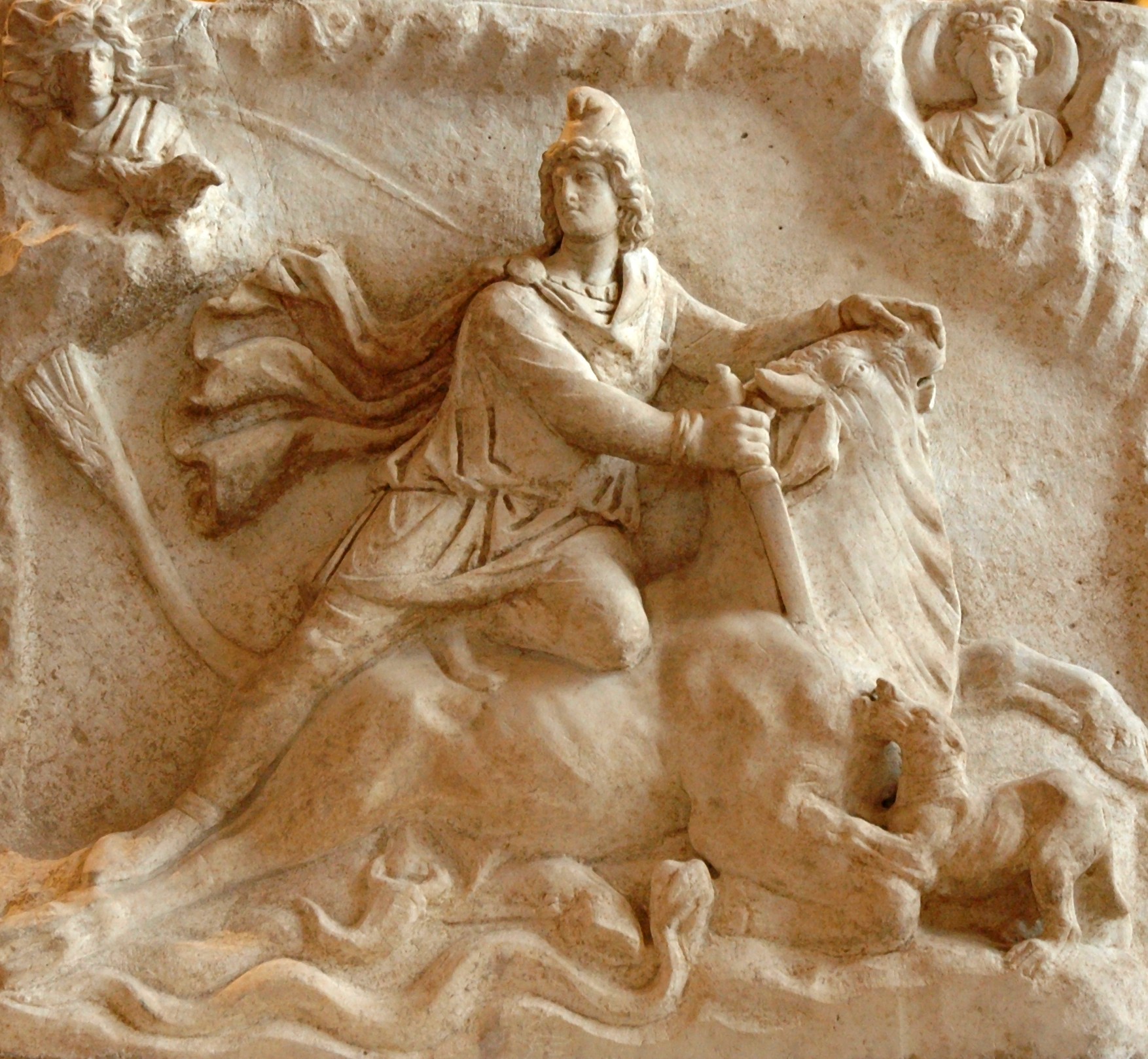- Zaraθuštra (Zoroaster) and the Zoroastrianism
- Mithraism
- Mani and Manichaeism
- Zurvanism
- Mazdakism
مزداپور، کتایون و دیگران. ۱۳۹۴. ادیان و مذاهب در ایران باستان. تهران: سمت
A predominantly bibliographic blog for Iranian Studies
مزداپور، کتایون و دیگران. ۱۳۹۴. ادیان و مذاهب در ایران باستان. تهران: سمت
Dabrowa, Edward. 2014. The Arsacids: Gods or Godlike Creatures?. In Tommaso Gnoli and Federicomaria Muccioli (eds.), Divinizzazione, culto del sovrano e apoteosi Tra Antichità e Medioevo, Bononia University Press, 149-159.
Edward Dabrowa is a Polish historian, Professor who graduated from the Faculty of Philosophy and History at the Jagiellonian University in 1972 and received the title of professor 1994. He is Currently head of the Department of Ancient History and the Institute of Jewish Studies at the Faculty of History at the Jagiellonian University

Imanpour, Mohammad-Taqi. 2015. Re-establishment of Achaemenid History and its Development in the Nineteenth and Twentieth Centuries. Iranian Studies. 48(4), 515-530.
Iranians were aware of Sasanian history through traditional historical writings, but they knew nothing about Achaemenid history. Following European travelers to Persia from the fifteenth century, who were well prepared by reading the classical and biblical texts, Persepolis and Pasargadae were rediscovered and Achaemenid history re-established in the nineteenth century. The rise of Reza Khan to power and his grand emphasis on nationalism and ancient Iran that characterized his reign also left a deeper impact on Achaemenid studies in this period. In this paper the re-establishment of Achaemenid history and its development in nineteenth and twentieth centuries are discussed and reviewed.
Mohammad-Taqi Imanpour is Associate Professor of Ancient History of Iran at Ferdowsi University of Masshad, Iran.
Van Oppen De Ruiter, Branko F. 2014. The Susa Marriages: A Historiographical Note. Ancient Society. 44, 25-41.
The Persian and Median noble women whom Alexander married to his Greek and Macedonian companions at Susa were all repudiated shortly after his death — so common opinion would have it. The present note aims to dispel this notion and to argue instead that Alexander’s Successors had no reason to abandon their Asiatic wives — even if they did eventually marry other women. If the Susan brides failed to make their presence in recorded history, that would be because ancient authors found nothing worth mentioning in their subsequent careers. Underlying modern assumptions, moreover, we will find misleading believes such as that the Macedonians were serially monogamous and that they resented their foreign wives. This article may thus serve as a warning about the intricacies of (early-) Hellenistic marital practices.
 Panaino, Antonio. 2014. Sidera Viva. Studi Iranici di Storia della Mitologia Astrale, dell’Astronomia e dell’Astrologia Antica. (Ed.) Andrea Gariboldi, Paolo Ognibene & Velizar Sadovski. . 2 vols. Milano: Mimesis.
Panaino, Antonio. 2014. Sidera Viva. Studi Iranici di Storia della Mitologia Astrale, dell’Astronomia e dell’Astrologia Antica. (Ed.) Andrea Gariboldi, Paolo Ognibene & Velizar Sadovski. . 2 vols. Milano: Mimesis.
Antonio Panaino: “Mimesis und Liturgie im mazdayasnischen Ritual: Die Amtseinsetzung der sieben Unterpriester und die symbolische Götter-Verkörperung”
Donnerstag, 16. Juli 2015, Freie Universität Berlin, Institute for Iranian Studies.
This lecture proceeds within the framework of the Corpus Avesticum Meeting in Berlin, which was held in 22–23 May 2015 at the Freie Universität Berlin. The lecture will be followed on Friday 17th July 2015 with an internal meeting of the members of the Corpus Avesticum settled in Berlin.
 Livshits, Vladimir A. 2015. Sogdian epigraphy of Central Asia and Semirech’e. (Ed.) Nicholas Sims-Williams. (Trans.) Tom Stableford. (Corpus Inscriptionum Iranicarum. Part II Inscriptions of the Seleucid and Parthian Periods and of Eastern Iran and Central Asia Vol. III. Sogdian). London: School of Oriental and African Studies (SOAS).
Livshits, Vladimir A. 2015. Sogdian epigraphy of Central Asia and Semirech’e. (Ed.) Nicholas Sims-Williams. (Trans.) Tom Stableford. (Corpus Inscriptionum Iranicarum. Part II Inscriptions of the Seleucid and Parthian Periods and of Eastern Iran and Central Asia Vol. III. Sogdian). London: School of Oriental and African Studies (SOAS). Gyselen, Rika (ed.). 2014. Documents, argenterie et monnaies de tradition sassanide. (Res Orientales 22). Bures-sur-Yvette: Groupe pour l’Étude de la Civilisation du Moyen-Orient.
Gyselen, Rika (ed.). 2014. Documents, argenterie et monnaies de tradition sassanide. (Res Orientales 22). Bures-sur-Yvette: Groupe pour l’Étude de la Civilisation du Moyen-Orient.